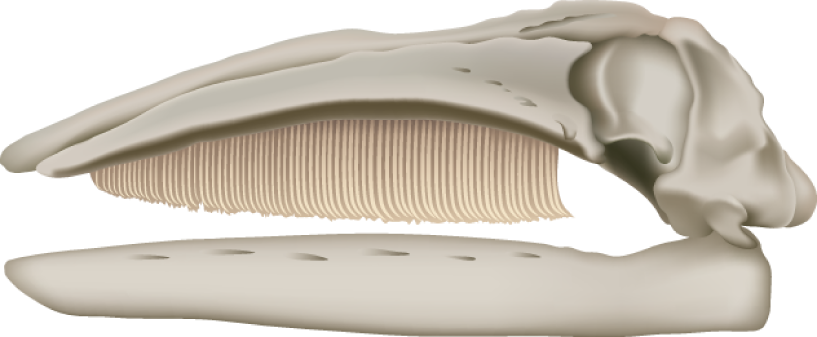Whales
Learn more about these magnificent creatures
Humpback Whale
(Megaptera novaeangliae)

Monterey Bay Season: March through November (sometimes as late as January)

The Humpback Whale (Megaptera novaeangliae) is a marvelous cetacean to observe closely here in Monterey Bay. They are the acrobats of the great whales and the ultimate scene-stealers! We see lots of them, including mothers with calves. Those calves are rambunctious and often breach over and over.
They come here to feed both on krill and on small schooling fish. What an experience to observe these behemoths lunging up to the surface, huge mouths agape and throats expanded as they feed. We love it when their food is close to the surface, so we can see the action.

Humpbacks chase their prey up to the surface and emerge open-mouthed in a sudden burst.

Humpbacks sometimes slap the water with their long pectoral fins over and over and over.

Cetacean Adaptations
Cetaceans (whales and dolphins) have evolved into extremely stream-lined animals for efficient swimming and diving. They have lost their rear limbs entirely. Their forelimbs retain all the same bones as land mammals, but have elongated finger bones forming paddle-like flippers.
Conservation Concerns
All whales are subject to entanglement in fishing gear which can result in weakening, cuts and infections and drowning. It is a very disturbing thing to see such a majestic animal as a humpback whale trailing fishing line and buoys. It can get caught in their mouth, preventing feeding, or on their flippers or flukes cutting off circulation or causing drowning. Unfortunately we have observed entangled whales in Monterey Bay each year recently and done our best to get rescue teams to the scene.
Blue Whale
(Balaenoptera musculus)

Monterey Bay Season: Late May / early June through August.

The Blue Whale (Balaenoptera musculus) is the largest living animal on the planet at eighty feet long and can weigh over 100 tons with a blow twenty feet tall. It is truly thrilling to have this huge animal surface near the boat. On a good day we can see through the water and the light bluish-gray body appears as a turquoise hue. It is magical. Blue Whales come into Monterey Bay to feed on the abundant seasonal krill blooms.

Conservation Concern: Ship collisions
In 2010 a dead pregnant blue whale beached along the San Mateo County coast north of Monterey Bay. It was determined to have died from a collision with a tanker ship. These collisions are becoming more common along the California coast as both our whale populations and tanker traffic increases. Shipping lanes cross whale migration corridors and feeding grounds. Current research is striving to document whale behavior around large ships in order to inform shipping lane regulations along our coast.
California Gray Whale
(Eschrictius robustus)

Monterey Bay Season: December through May.
The California Gray Whale (Eschrictius robustus) annual migration brings them through Monterey Bay twice each year. During the peak times we are surrounded by geyser-like blows and graceful flukes, which is a real treat. Southbound grays are seen December through mid-February. Northbound grays come through mid-February to mid-May. Mostly they are single-minded in their trek and we see them surfacing, blowing and fluking as they move along. Sometimes we are treated to a rare breach, spyhop or even some breeding behaviors. Other times they are downright stealthy in their behavior, barely clearing the surface to take a breath. An unforgettable observation is when a pod of orcas are on the hunt for gray whales. This happens each spring here in Monterey Bay when the mother grays and their calves are traveling north.

Gray Whales are Bottom Feeders
The image above of a gray whale skull shows how the baleen plates hang down from the upper jawbone. These baleen plates form a broom-like inner surface for filtering invertebrates from the bottom sediment.
Keep Current!
Check out the American Cetacean Society’s California Gray Whale Census Data Page for up-to-date California Gray Whale information.
Conservation Concerns: Plastic Garbage in our Oceans is Bad News
This excerpt is from an article written in the fall of 2011 by David Todd of Puget Sound:
Cascadia Research’s renowned cetacean researcher John Calambokidis explored the contents of a beached gray whale’s stomach. He noted there was a significant amount of algae with little evidence of food. He reached his hand inside the whale and removed a piece of plastic. Then, a length of rope, a golf ball, a plastic bag, a piece of cloth. Another piece of plastic, more cloth. Duct tape. A towel. Electrical tape. Fishing line. More rope. A surgical glove. Plastic funnel. More plastic bags. A huge piece of fabric (it was half a pair of sweatpants). Work around us stopped and everyone gathered, stunned. Over twenty plastic bags in all were removed from the whale’s stomach. John shook his head. In 20 years examining over 200 whales, he said he had never seen anything like this.
Orca / Killer Whale
(Orcinus orca)

Monterey Bay Season: Year-Round


Check out the “Orcanet” orca tracking website for recent Photo Blog and news about orcas from the Pacific Coast.
Conservation Concern: Pollutants in the Ocean Orcas as an apex predator are one of the most susceptible mammals to bioaccumulation of human-made contaminants. As mammals, we store pollutants in our fatty tissue. As apex predators which feed at the top of the food chain, orcas are consuming chemicals stored in their prey and then concentrating them in their own fat. The levels of PCBs and DDEs in the orca’s blubber layer is frightening. This contaminant load will compromise their immune system making them more prone to disease and may lower reproductive success. This is bad news for these marvelous whales. We humans need to clean up our act and our oceans.
